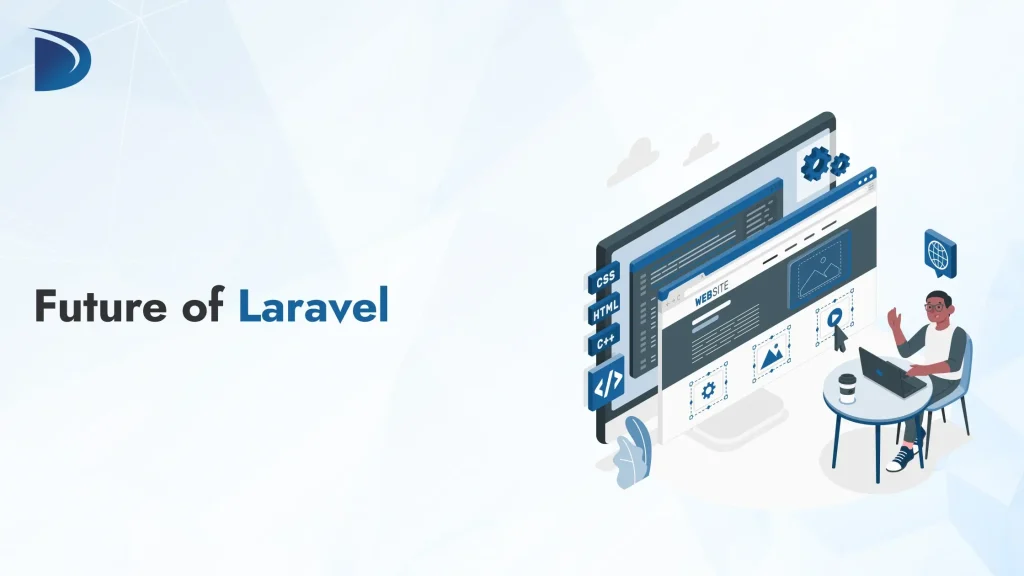Table of Contents
Laravel, a powerful PHP framework, has solidified its position as a leading choice for developers building modern web applications. Its elegant syntax, extensive ecosystem, and developer-friendly features make it a go-to solution for businesses and developers alike. As we look ahead, the future of Laravel is poised for exciting advancements driven by emerging technologies, community contributions, and evolving industry demands. This article explores the trends, innovations, and reasons why Laravel is the Best PHP Framework for building scalable, secure, and high-performing applications.
The Evolution of Laravel: A Brief Overview
Since its inception in 2011 by Taylor Otwell, Laravel has grown from a simple framework to a comprehensive ecosystem. With features like Eloquent ORM, Blade templating, and a powerful routing system, Laravel simplifies complex development tasks. Its open-source nature and active community ensure continuous improvements, making it a preferred choice for PHP Development services worldwide.
As we move into 2025, Laravel continues to evolve with regular updates, such as Laravel 12, which introduced enhanced performance optimizations, better TypeScript support, and improved developer tooling. These updates reflect Laravel’s commitment to staying relevant in a competitive landscape.
Key Trends Shaping the Future of Laravel
1. Adoption of Modern PHP Features
PHP has undergone significant improvements, with versions like PHP 8.3 and 8.4 introducing features such as typed properties, arrow functions, and JIT compilation. Laravel leverages these advancements to enhance performance and developer productivity. Expect future Laravel releases to integrate even more modern PHP features, ensuring applications are faster and more efficient.
2. Rise of API-Driven Development
With the growing demand for headless architectures and microservices, Laravel’s API development capabilities are becoming increasingly vital. Tools like Laravel Sanctum and Passport simplify authentication for APIs, while Laravel’s resource controllers streamline the development of RESTful APIs. As businesses shift toward decoupled frontends using frameworks like Vue.js or React, Laravel will continue to be a top backend choice for API-driven applications.
3. Enhanced Integration with Frontend Technologies
Laravel’s ecosystem, including tools like Laravel Breeze, Inertia.js, and Livewire, bridges the gap between backend and frontend development. Livewire, in particular, enables developers to build dynamic, reactive interfaces without writing extensive JavaScript. In the future, expect deeper integrations with frontend frameworks, making Laravel a versatile choice for full-stack development.
4. Focus on Performance Optimization
Performance is critical for modern web applications. Laravel’s caching mechanisms, lazy loading, and query optimization features already ensure fast load times. Upcoming releases are likely to introduce further optimizations, such as native support for PHP’s OPcache enhancements and better database indexing, to meet the demands of high-traffic applications.
5. AI and Machine Learning Integration
The integration of artificial intelligence (AI) and machine learning (ML) is transforming web development. Laravel developers are increasingly incorporating ML models for features like personalized recommendations, chatbots, and predictive analytics. Libraries like PHP-ML, as well as integrations with TensorFlow or PyTorch, will drive innovation in this space through Laravel’s extensible architecture.
6. Serverless Architecture and Cloud-Native Development
Serverless computing is gaining traction, and Laravel is adapting to this trend. Laravel Vapor, a serverless deployment platform, allows developers to deploy applications on AWS Lambda with minimal configuration. As cloud-native development continues to grow, Laravel’s ecosystem will expand to support platforms like Google Cloud and Azure, offering seamless scalability and cost efficiency.
7. Improved Security Features
Security is a top priority for web applications. Laravel’s built-in features, such as CSRF protection, secure authentication, and encryption, make it a trusted choice. Future updates will likely include advanced security measures, such as support for zero-trust architecture and enhanced data validation, to address evolving cyber threats.
Laravel in the Competitive Landscape
Laravel vs Node
When comparing Laravel vs Node, both have their strengths. Node.js excels in real-time applications and event-driven architectures, thanks to its non-blocking I/O model. However, Laravel shines in rapid application development, offering a structured framework, robust ORM, and a rich ecosystem. For businesses prioritizing developer productivity and maintainability, Laravel often outperforms Node.js in traditional web application development.
Why Choose a Laravel Development Company?
Partnering with a Laravel Development Company ensures access to specialized expertise in building scalable, secure, and feature-rich applications. These companies leverage Laravel’s ecosystem to deliver tailored solutions, from e-commerce platforms to enterprise-grade systems, while adhering to best practices and industry standards.
The Role of the Laravel Community
Laravel’s vibrant community plays a pivotal role in its success. With thousands of packages available via Composer and Packagist, developers can easily extend Laravel’s functionality. Community-driven initiatives, such as Laracon conferences and Laravel Forge, foster collaboration and innovation. As the community grows, expect increased contributions in areas such as AI integrations, performance tools, and developer education.
Predictions for Laravel’s Future
- Greater Emphasis on Developer Experience: Laravel will continue to prioritize developer happiness with intuitive tools, better documentation, and enhanced IDE support.
- Expansion of the Ecosystem: New first-party packages and tools will emerge, addressing trends like edge computing and Web3 development.
- Sustainability in Development: Laravel may introduce features to optimize resource usage, aligning with the industry’s focus on green computing.
- Global Adoption: As businesses in emerging markets embrace digital transformation, Laravel’s ease of use and affordability will drive its adoption in regions like Asia, Africa, and Latin America.
How to Prepare for the Future of Laravel
To stay ahead, developers and businesses should:
- Upskill in Modern PHP: Stay updated with PHP’s latest features and best practices.
- Explore Laravel’s Ecosystem: Experiment with tools like Vapor, Livewire, and Inertia.js to build cutting-edge applications.
- Invest in Continuous Learning: Attend Laracon events, follow Laravel News, and contribute to open-source projects.
- Partner with Experts: Collaborate with a Laravel Development Company to leverage the framework’s full potential.
Conclusion
The future of Laravel is bright, with innovations in AI, serverless architecture, and performance optimization paving the way for its continued dominance in PHP development. Its ability to adapt to modern trends while maintaining developer-friendly features solidifies its reputation as Why Laravel is the Best PHP Framework. Whether you’re a developer or a business seeking PHP Development services, Laravel offers the tools and flexibility to build the next generation of web applications. By embracing its ecosystem and staying engaged with its community, you can unlock endless possibilities with Laravel.

